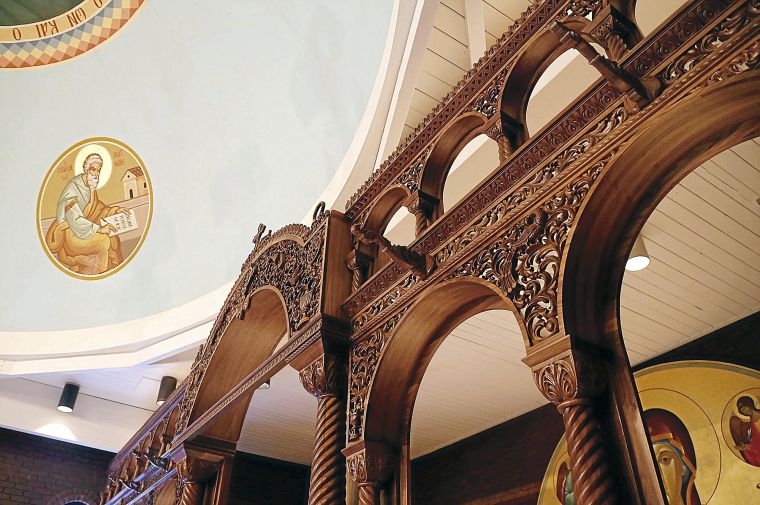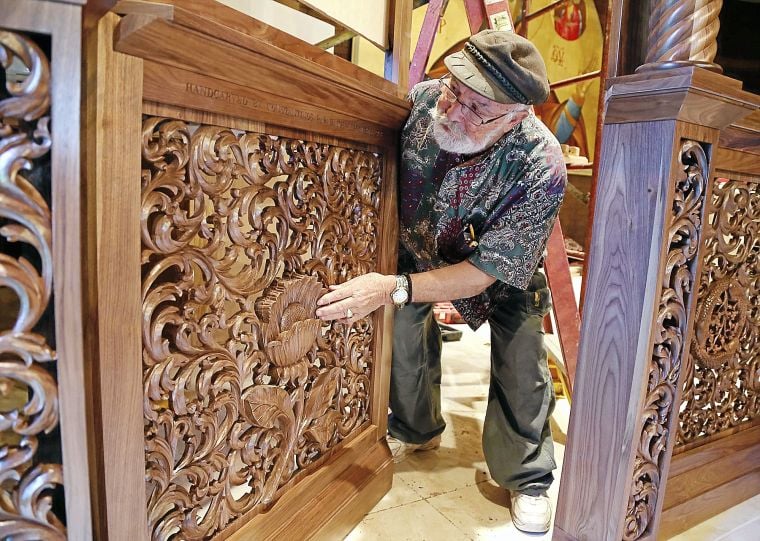
Holy Trinity Greek Orthodox Church in Tulsa commissioned this
hand-carved wooden screen as part of a larger renovation project.
Eastern Orthodox churches are returning to traditional designsafter
years of modernization.
Greek woodcarver Konstantinos Papadakis had just started the year-long project when his wife of 55 years died on July 30, 2012.
He said the words in Greek may not translate well into English, but in Greek, he "put her essence" into the woodcarving.
"I put my love for her in this carving. It has my heart in it," he said.
Papadakis said he was "very pleased" with the woodcarving.
"There's no other like it in the United States. It's my own style that I created."
The Rev. Bill Christ,
pastor of Holy Trinity, said the $140,000 woodcarving is one part of a
$350,000 renovation at the church, which was built in 1968 after the
congregation's original building was torn down to make way for the Inner
Dispersal Loop downtown.
The church was formed in 1921.
Orthodox churches in America have been built in a modern style in an effort to fit into American culture, he said.
But in the last 20 years
or so, as ethnicity has become more accepted, Orthodox churches are
building more traditional-style churches, which is a better expression
of the Orthodox faith.
The renovation at Holy
Trinity, and the wood-carved screen, are more traditional, he said.
Orthodox churches in Greece traditionally have wood-carved screens.


Screens in Orthodox churches separate the nave, where people congregate, from the altar, or sanctuary, a configuration that originated with the ancient Jewish temple, where a curtain separated the Holy Place from the Most Holy Place. Christ said the Eastern Orthodox and Jewish styles of worship have much in common.
Christian symbols are
carved into each panel of Holy Trinity's new screen, a lighthouse giving
light to a ship at sea, as Christ gives light to the world; loaves and
fish, depicting the miracle of the multiplying of the loaves and fish; a
chalice and wheat, symbolic of the bread and wine of the Eucharist.
Papadakis said two
peacocks holding a cross symbolize that the peacock, the most proud of
birds, can accept God and become humble, no longer proud.
He said he and two
assistants — Paul Sirba and Catherine McNamara —carved the screen by
hand out of walnut in his Minneapolis shop, using gouges and mallets.
The new screen has places
for eight large icons and 12 small icons. Two of the icons are finished
and installed. Others are being made.
Christ said that
iconography, biblical paintings, originated in an era when most people
could not read. The pictures illustrate the stories of the Bible.
"We're a very visual people," he said.
"Visual media is very important to us, very powerful. Look at television, movies, billboards."
"When we look at an icon screen, it helps us remember our traditions and our roots."






No comments:
Post a Comment